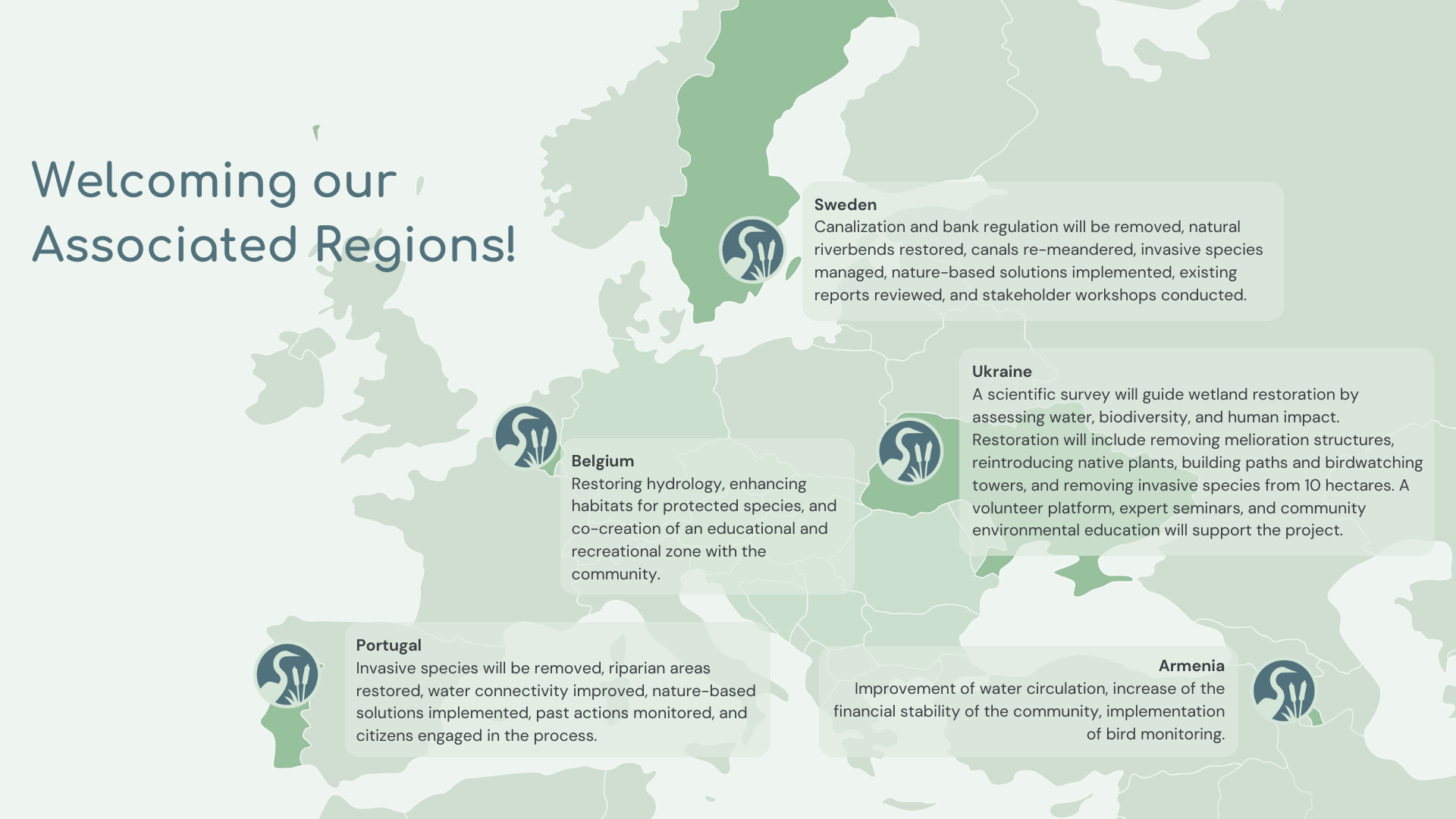Monitoring Sites
Danube Delta, Carasuhat area, Romania

Site features
The Carasuhat ecological reconstruction area is located at the confluence of the Danube River with the Black Sea. Previously, the drainage works carried out, between the years 1980 – 1990, in the current monitoring area, led to the disappearance of natural ecosystems and their transformation into an agricultural area. The project was abandoned in 1990, and a percentage of 70% of the surface of this area did not function as an agricultural area, nor was it returned to the natural delta regime.
Currently, the habitats of high natural value existing in the Carasuhat area are the result of the previous implementation of various ecological reconstruction activities, implemented between the years 2012-2014, that created the possibility for the non-productive agricultural area to return to the state that was recorded before the 1980s, when the construction of the dam and the anthropization of the area did not yet start.
Ecosystem
The reconstruction works aimed at restoring the hydrological system that creates conditions for the conservation of 18 types of habitats, for all species of plants, birds and fish, characteristic of the Danube Delta and included in the European Natural Heritage, associated with Natura 2000 network, more specifically to ROSPA 0031 and ROSCI 0065 classifications. Also, the ecological reconstruction led to a better valorization of socio – economic potential within the region, therefore, responding positively to inhabitants’ needs in terms of a clean environment and sustainable economic development.
Facts & Figures

Improvement of biodiversity by restoring the 18 habitats, part of EU natural heritage

Improvement of economic potential of the area by diversifying the economical activities (e.g. restoring a number of 924 ha and integrate them into the touristic circuit).

Improvement of the water quality within the region by shifting it to II-nd quality class.

Widening the forest habitat with an area of 10 ha of Salix alba, Populus alba and Fraxinus excelsior.

Location
Danube Delta, Romania
Size
The size of the entire Carasuhat monitoring site covers 924 ha.
Model of good practices for the application of nature-based solutions (NbS) for environmental restoration within the Danube Delta Biosphere Reserve, taking into account both the need to preserve nature, but also the need of the local community for development through economic activities, involving all parts of the quadruple helix.
Existing projects
There are no other projects under implementation.
Previous restoration efforts
In the monitoring site Carasuhat (MS6), the project “Ecological reconstruction of the lands belonging to the public domain of the Mahmudia Local Council, within the Carasuhat precinct in the Danube Delta“ was successfully implemented, being co-financed by the European Regional Development Fund through the Environment Sectoral Operational Program 2007-2013, contract no. 128266/01.03.2012.
Restore4life upcoming monitoring activities
In the first stage, a screening of the contaminants from 4 main groups will be carried out, and depending on the results obtained, a monitoring design will be established and applied during the monitoring activities, in order to create a holistic database of the most relevant parameters that can reveal the actual ecological status of Carasuhat area (MS6). An analytical framework will be developed, based on various prediction models, in order to build capacity among the stakeholders – virtual sensors will be developed for cost-demanding parameters.
Monitoring will be focused on the following groups:
ꕥ General physico-chemical indicators
ꕥ Indicators of eutrophication
ꕥ Specific toxic pollutants
ꕥ Emerging contaminants
Involvement of the community
The project “Ecological reconstruction of the lands belonging to the public domain of the Mahmudia Local Council within the Carasuhat agricultural precinct in the Danube Delta“ is the first ecological reconstruction action in the Danube Delta implemented by a local community. The local community was consulted in the key stages of the project. The quadruple helix functionality will be identified and monitored in the Carasuhat region in order to see the links and to point out possibilities for improving the previous nexus.
Expected Impact
The reconstruction works in the Carasuhat area (MS6) have facilitated the diversification of the natural resources available to the local community, the development of some touristic/fishing activities and at the same time, they contribute to flood mitigation.
Site gallery







